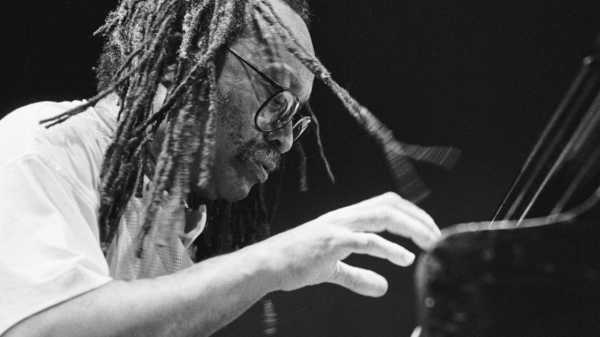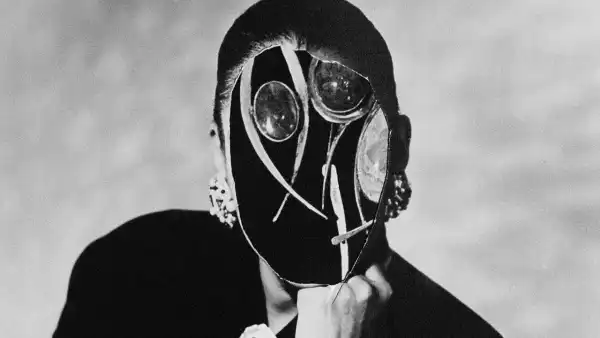
One warm summer evening in the mid-nineteen-eighties, the pianist Cecil Taylor was scheduled to give a solo performance at a concert hall on the Lower East Side, all tickets sold at the door. Expecting a clamoring crowd, I got there an hour early; I was the first person to arrive. When the doors opened, there were only a handful of enthusiasts. We trickled into the hall, a converted school auditorium that could easily have seated two hundred. There was a piano onstage; at the scheduled time, some monosyllabic incantations could be heard from the wings, some shuffling of feet. The pianist poked himself out onto the hardwood stage, doing a sort of halting, tentative chant and dance, approaching the piano mysteriously, a Martian pondering a monolith. He tapped and rapped and knocked the instrument’s solid wooden body; he probed it from all angles; then he found the keyboard, struck a note, and then another, and another; his theatrical probing gave way to radiant musical illumination.
Taylor had to have noticed, as he circumnavigated the instrument, the sparse audience; he pretended that it didn’t matter. For the twenty lovers in attendance, Taylor approached the piano bench, sat down, struck a chord, crystallized a motif, and worked it out in thunder. For an hour, all by himself onstage and nearly by himself in the hall, he performed a colossal, exhausting, self-sacrificing concert of pianistic fury, filling the room with a torrential, polyrhythmic, rumbling, crashing, shattering whirlwind. It resembled the music that I had loved on records since I was a teen-ager a decade earlier, but now erupted, in my presence, with an improvisational explosion and a spontaneous compositional complexity that put it both at the forefront of modern jazz, of modern music as such. It was the mightiest and most generous musical exertion I had seen. To this day, I’ve only seen Taylor himself surpass it.
Cecil Taylor died on Thursday, at the age of eighty-nine. Of all the jazz musicians who wrought definitive, revolutionary changes in music in the late nineteen-fifties and early nineteen-sixties, Taylor’s advances went further than anyone else’s to expand the very notion of musical form. His ideas built on the emotional and intellectual framework of modern jazz in order to extend them into seemingly new dimensions—ones that have remained utterly unassimilable by the mainstream and are still in the vanguard, rushing headlong into the future.
The template for his vast achievements was suggested in his very first album, “Jazz Advance,” from 1956. There, working with the bassist Buell Neidlinger (who died last month, at the age of eighty-two), the drummer Denis Charles, and the soprano saxophonist Steve Lacy, Taylor played, among other works, a composition by Duke Ellington, from whom he derived the idea of orchestral jazz—of jazz as orchestral music, as comprehensively composed as it is freely improvised, whether it’s played by a big band or a pianist alone onstage. Taylor also played a composition by Thelonious Monk, from whom he derived a sense of the piano as a percussion instrument, with the digital attack cut into sharp angularities. But where Monk’s style was pared down to stark notes, detached chords, and shard-like or ditty-like phrases, Taylor—a conservatory-trained virtuoso—turned each of his ten fingers into separate percussion instruments, not paring down his themes but analyzing and multiplying them into an overwhelming barrage of expanded ideas. Where John Coltrane, later in the decade, sought to play every note in a chord and multiplied his series of chords seemingly to the horizon, Taylor, already in 1956, left chordal jazz behind and spun musical material of his own choosing (whether harmonic, motivic, melodic, or rhythmic) into kaleidoscopic cascades of sound.
Taylor’s crucially influential 1962 live recordings from the Café Montmartre in Copenhagen are the mark of that year of miraculous breakthroughs. He worked with the drummer Sunny Murray (who died in December, at eighty-one) and the alto saxophonist Jimmy Lyons (who worked with Taylor from 1961 until his death, in 1986). Taylor took a crucial and radical step: he released jazz from the lockstep of the metronomic beat. He developed a rhythmic concept that, rather than pounding or foot-tapping, swirled and spiralled, undulated with a kind of inner, organic motion, a musical rising and buffeting that laid shifting rhythms on top of each other and freed the entire group to pursue, simultaneously, elaborate and impassioned improvisations. His orchestral and compositional concepts gave rise to solos freer than any yet heard—his piano was an orchestra, his band was an orchestra, but each of its members, and Taylor foremost, was bold and brilliantly individual.
For Taylor, music wasn’t a goal or a product, it was a part of a comprehensive personal and artistic experience. He wrote poetry, published it on album covers, recited it in recordings, and worked with poets who recited with his music. He worked with and was inspired by dancers. The theatrical element of his performances, such as his danced and chanted prelude to the mid-eighties recital, was as essential to his work as was his musical creation. His musical ideas and artistic ideals weren’t limited to sound and structure: he anchored them in and expanded them through, the full sensory and intellectual spectrum of modern art.
Some time in the mid-aughts, Taylor installed himself in the Iridium, a low-ceilinged basement space in midtown, with a big band: about fifteen wind instruments, plus bass and drums, and Taylor and his piano at the center of things. They played complicated compositions; the band’s musicians soloed with fury and improvised collectively, at full strength, raising quite a racket. Throughout the set, for ninety minutes, Taylor, who was in his mid-seventies, played without interruption, seemingly without even a pause. He performed with, or even against, the group’s massed fury, challenging the soloists and, above all, challenging and defying himself to find more music, more ideas, more emotions, more ecstatic sound, to pull it from the core of the body and the depth of the soul and break it outside the narrow bounds of the tight-walled concert hall and into the world at large.
Sourse: newyorker.com






